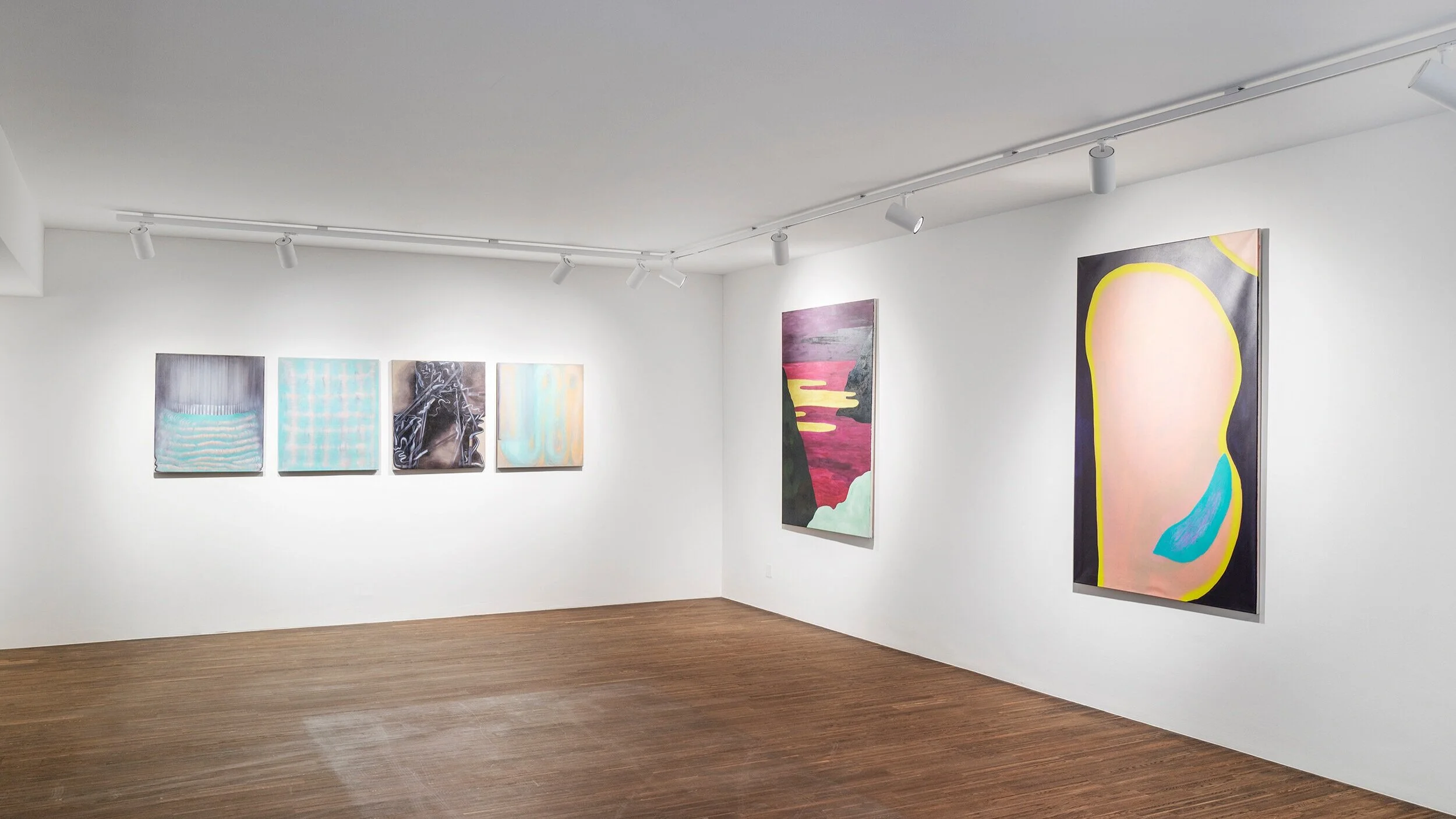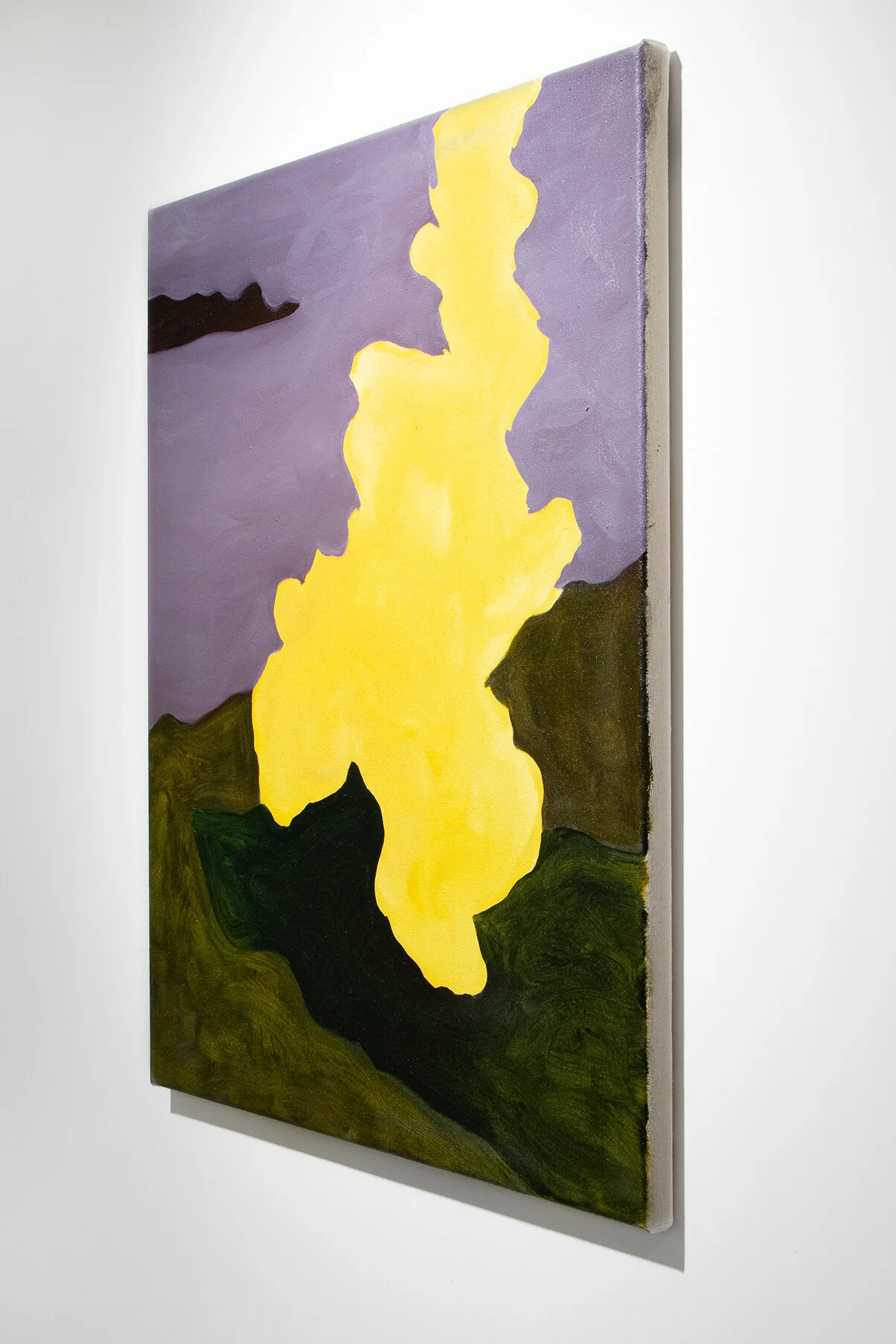The world is full of tensions
Informal Intro: Raffael Bader
Becoming Habits: Chapter One - Installation
From Left to Right:
Vika Prokopaviciute, Raffael Bader, Shannon Zwicker
Text by Studi0.
Going to see art can be a daunting experience for many, even for the people working within the art world. We hear from plenty of our visitors that they feel intimidated by their perceived lack of knowledge and understanding of art and hence prefer to stay away from art all together. Within the arts community certain traditions have been established to elevate art practices by writing complicated and word heavy statements and press releases which confuse the best of us. For many artists that has also meant that they feel under growing pressure to write artist statements that uphold this intense justification of their work and give absolute meaning to every decision made in the making process, but art isn’t that linear in most instances. Let’s not forget as well that whilst some artists are great with words and have also the gift of writing beautifully some feel that they chose art to forego having to explain their inner workings by means of words. The dilemma is real, we need to put words to artworks to enable visitors engagement but where do we see the line between an explanatory and confusing text?
The question posed itself: what can we do to shift this experience and how can we facilitate an informal introduction into the works of artists that is non threatening ? We sent out a questionnaire to all our artists to be answered in a very informal way, accepting that for some questions we might not get an answer because perhaps it is still working itself out or because a definitive answer does not exist. Let’s give the artist and the reader the chance to accept that not everything needs be understood in a definitive way.
In our first of these informal intro’s Raffael Bader will be writing about his works in the Chapter One of Becoming Habits.
Text by Raffael Bader.
General: I realised for myself, that the world is full of tensions and those tensions hold everything together. Nature consists of structures, which seeks harmony in a chaotic fertile soil. Humans are nature in the same way.
In my paintings I follow those structures in a subtle way. This method feels to me like participating with the world naturally.
Since this formula involves a continuous process, I also see my work in progressive process. One found solution leads to the next. One painting leads to the next painting. There won’t be something completely finished. I don’t believe in the idea of completion.
Even if a painting suggests that it will hold onto something forever, we look at it differently today than tomorrow, it changes with us.
By the river III, Oil on canvas, 45x35cm, 2020
Raffael Bader
This painting is part of the series "by the river". As the title suggests, the focus is on a river. But what is a river and what views do we have of rivers? What emotions are connected with what kind of river? Those questions rise up in me by thinking of rivers.
“by the river III” seems to be a specific river, but it gets its shapes and colours from painting itself. So the painting makes it specific, not an example of my current environment. An image emerges that awakes longing and still shows something, something which we contemplate better from a distance.
Water is one of the main elements that our world is made up of. I use a medium that makes the oil paint water-soluble. So water becomes an elementary element in my work. In addition to the oil paintings, I create watercolours in which this element also plays a central role.
Dark rocks in a purple sea, Oil on canvas, 140x105cm, 2020
Raffael Bader
The painting “dark rocks in a purple sea” works in a similar way like “by the river III”. It’s that view that probably makes the observer feel comfortable. It’s those core elements, water, rock and air (sky), that most humans are familiar with. Everyone has its own connection to those elements.
Still it’s between a scene that feels like real and unreal: The appearance of the shapes and the colour. For me it goes beyond the image of a landscape and when the viewer engages with it, he can find out something about himself.
In the end the bush burns down, Oil on canvas, 60x50cm, 2020
Raffael Bader
Fire is a strong element for me. It is pure energy and therefore life. At the same time it has a destructive power that apparently eliminates material things. For me the picture embodies this power and unites life and death in itself. It's the course of things. Ultimately, it gives me comfort.
We’d like to thank Raffael for his explanation of his practise and for his permission for us to publish this article.
Raffael’s work can be found in our Collectors Club. He has also published his own book called ‘Traveling Museum Attendant’ which can be found below.





